Maltipoo is a fun-sized Doodle breed that’s gaining more and more popularity amongst novice and experienced dog owners. Whether you’re thinking about adopting a Maltipoo puppy or you’d just like to learn more about this Poodle-Maltese mix, here we’ve gathered everything you should know about this precious Doodle breed. Let’s dig in!
Learn How to Care for Your Doodle Puppy!

Perfect for first-time Doodle parents, get ALL your questions answered, including questions new Doodle parents don’t even think to ask.
Plus, get $700 worth of Bonus Materials for FREE, including:- Doodle Parenthood Community and Support Group ($190 value)
- Doodle Puppy Growth Tracker ($20 value)
- EMERGENCY Cheatsheet: When To Call The Vet Immediately ($50 value)
- HELP! Button ($145 value)
- And SO MUCH MORE!
What Is A Maltipoo?
Even though a fairly new ‘designer’ breed, the Maltipoo has become increasingly popular in recent years. They make amazing companions to almost anyone, as they’re super friendly, affectionate, and just overall charming fluff balls of love. And thanks to their scaled-down size, Maltipoos are the perfect dogs for apartment living.
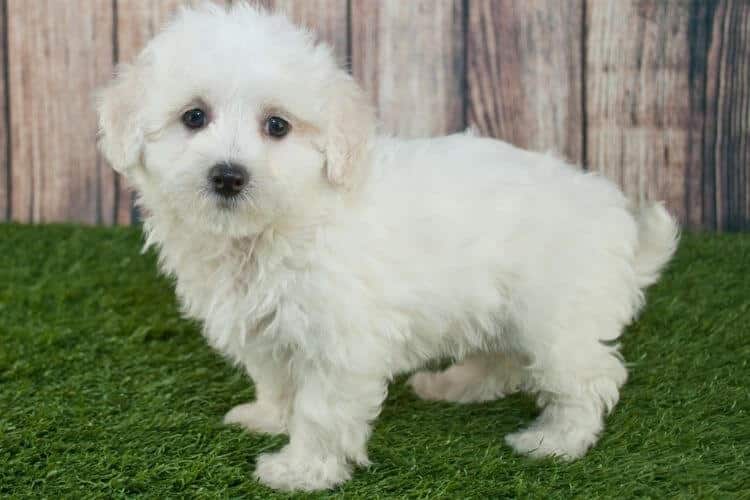
So, what is a Maltipoo pup exactly? The Maltipoo breed is an adorable mix of the Poodle and Maltese. To be more exact, the Poodle in the mix is always either Mini or Toy Poodle. Although both Poodle and Maltese breeds have been around for a while (and both of them are extremely popular, we might add!) Maltipoo is a newer hybrid breed that might be a bit harder to get your hands on.
Like with other Doodle breeds, having two different purebred parents doesn’t give us too much certainty about how the puppies might turn out. A Maltipoo might take more after the Poodle, or resemble more of the Maltese parent. And some pups fall somewhere right in between. Either way, you’ll be set up with the most gorgeous little dog that will surely melt anyone’s heart.
Maltipoo Physical Appearance
Color
The great thing about Maltipoos is that we never know what we might get. Even puppies from the same litter can come in different colors and markings. Most common colors in Maltipoos are brown, black, white, apricot, gray, silver, cream, or red. Some Maltipoos can also be parti or merle, meaning that they have large quantities of two different colors in their coat. There’s also the rare phantom Maltipoo with three different colors on them.
Here are a few pictures of Maltipoo pups in different colors:
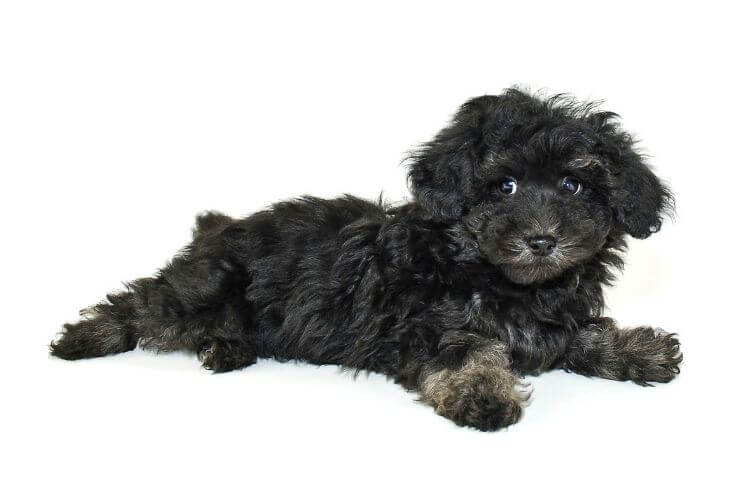
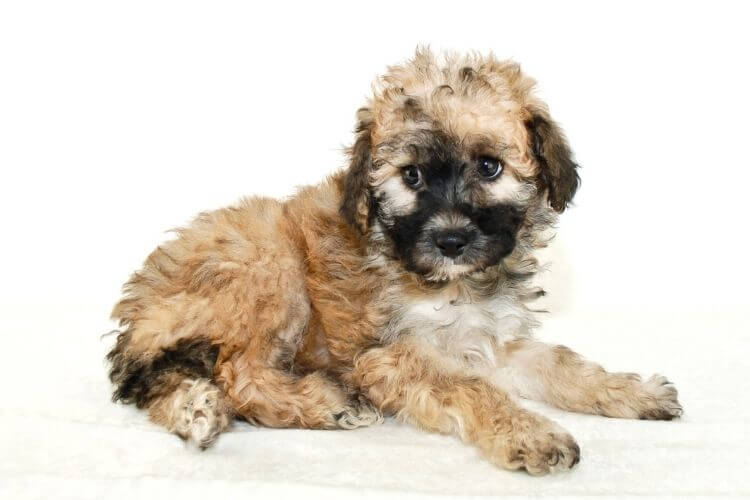
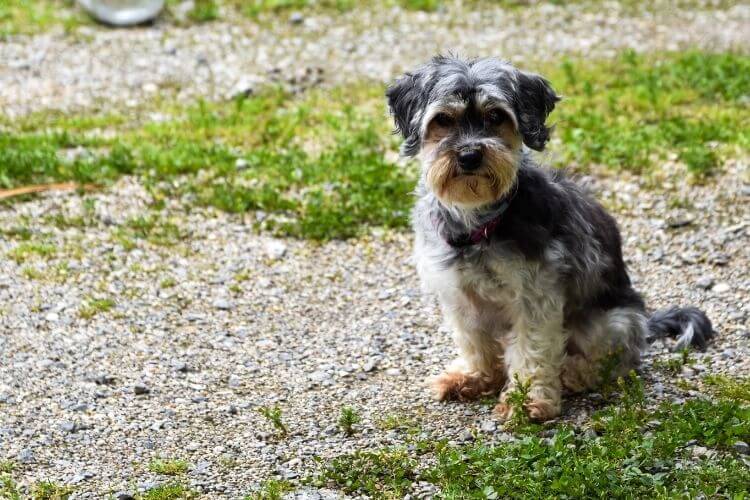
Coat, Shedding, And Hypoallergenic Level
Just like other Doodles, the Maltipoo breed comes in many different color and coat variations. As you might know, what makes Doodles like the Maltipoo so desirable amongst dog owners is that they’re very low to non-shedding, some would even say hypoallergenic. Although there’s no such thing as a 100% hypoallergenic dog, the Maltipoo does come pretty close!
As the Maltipoo combines two different purebred dogs, there’s a wide range of outcomes we may expect. A Maltipoo puppy can have a silky soft and straight coat that resembles the Maltese parent. Or the puppy may come with a thick and curly coat that’s inherited from the Poodle parent. And, of course, some Maltipoos sport a wavy coat that combines them both.
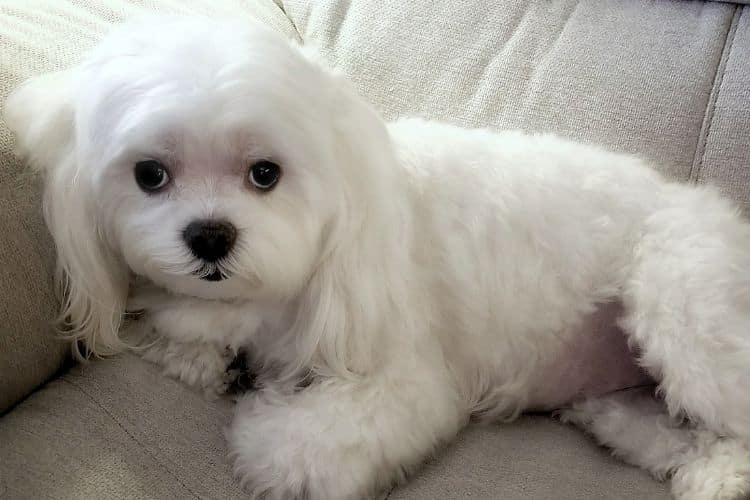
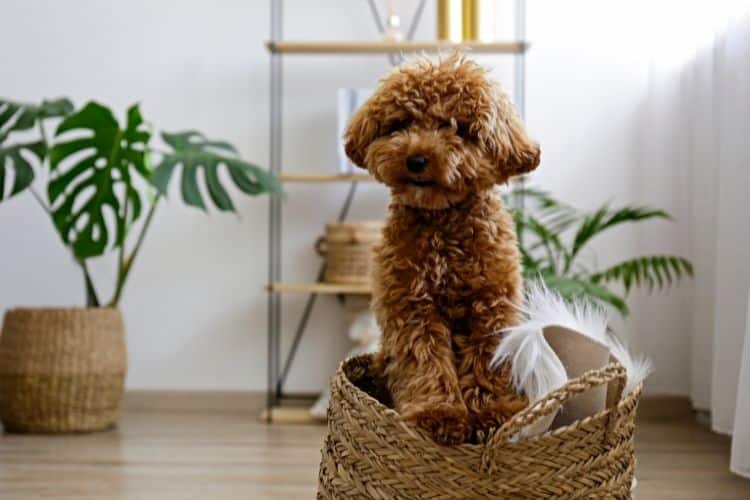
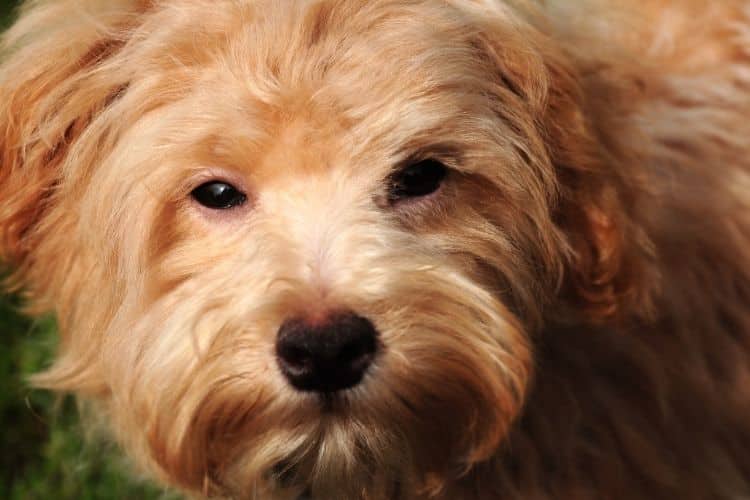
What’s great about the Maltipoo is that even straight-haired pups tend to shed very little. That’s down to the fact that both the Maltese and Poodle breeds don’t have an undercoat, which would otherwise shed. On the other hand, Maltipoos with curly Poodle-like hair might need more maintenance, as the thick and curly hair tends to knot easily. Either way, Maltipoos are generally very allergy-friendly, making them the perfect choice for people who struggle with dog dander allergy.
Maltipoo Size
The size of the Poodle parent is a key factor in determining a Maltipoo’s size. As we mentioned earlier, only Toy and Mini Poodles are ever crossed with the Maltese. And as one of the many appeals of the Maltipoo is its small size, we can most commonly see Toy Poodles used in the mix to achieve smaller-sized pups.
As the Maltipoo is a fairly new breed that combines two different purebred parents, there’s much variety involved when it comes to their size and other characteristics. Maltipoos can weigh anywhere between 5 to 25 pounds with a height of up to 14 inches at the shoulder. They usually reach their full size anywhere between 8 and 12 months old.
Let’s take a quick look at the size estimates for adult Toy and Mini Maltipoos:
| Toy Maltipoo | Mini Maltipoo | |
| Weight | 5-15 pounds | 15-25 |
| Height* | 6-11 inches | 11-14 inches |
| When Full-Grown? | 7.5-11 months | 11-13 months |
We recommend you check out our full Maltipoo size guide, where you can learn more about the different sizes and growth patterns of the Maltipoo breed. There, you’ll also find our interactive puppy growth calculator that helps you predict and track your Maltipoo puppy’s weight from birth to adulthood.
Maltipoo Temperament & Personality
Maltipoos are praised for their great temperament and personality. They’re very social little pups who enjoy spending time with their humans above all else. Maltipoos are generally very loving, calm, gentle, and affectionate. If you’re looking for the perfect lap dog who can’t wait to snuggle up after a long day, the Maltipoo is your best choice.
What’s more, thanks to the highly intelligent Poodle in the mix, Maltipoos are very smart little companions who love learning new tricks. This makes them very easy to train, so you can rest assured that you’ll have a well behaved pup. On the other hand, Maltipoos are known to be vocal. It’s not uncommon for a Maltipoo to bark when they see someone in front of the house or when they’re just bored.
Additionally, Maltipoos don’t want to spend too much time alone and can often struggle with separation anxiety. Because of that, Maltipoos would thrive best in a household where they can spend enough time with their owners.
Maltipoo Generations
With all Doodles, including the Maltipoo, a determining factor in their physical appearance, traits, and size is their generation. You might have heard about F1 Maltipoos or F1b pups. But what does it all mean exactly? As it can be (and definitely is!) a confusing topic, let’s take a quick look at the different Maltipoo generations and what they mean:
| 1st Parent | 2nd Parent | % Maltese* | % Poodle* | |
| F1 Maltipoo (first-generation) | Maltese | Poodle | 50% | 50% |
| F1B Maltipoo (first-generation backcross) | F1 Maltipoo | Poodle | 25% | 75% |
| F1BB Maltipoo (first-generation backcross backcross) | F1B Maltipoo | Poodle | 12.5% | 87.5% |
| F2 Maltipoo (second-generation) | F1 Maltipoo | F1 Maltipoo | 50% | 50% |
| F2B Maltipoo (second-generation backcross) | F1 Maltipoo | F1B Maltipoo | 37.5% | 62.5% |
| F2B Maltipoo (alternate cross) | F2 Maltipoo | Poodle | 25% | 75% |
| F3 / Multigen Maltipoo | F1B Maltipoo or higher | F1B Maltipoo or higher | Varies | Varies |

So, as we can see, a Maltipoo’s generation can greatly determine if they’ll inherit more of the Maltese parent traits or lean more towards the Poodle side of the family. For example, we can typically expect F1b and F2b Maltipoos to have a curlier coat, as their lineage has more Poodle in it. Similarly, as F1 and F2 Maltipoos have a 50/50 mix of Poodle and Maltese, there’s also an equal chance of puppies inheriting traits from either of the parents.
Maltipoo Health & Life Expectancy
Maltipoos have a life expectancy of about 10-15 years. Thanks to hybrid vigor, Maltipoos are usually healthier than their purebred parents. Of course, a responsible breeder will only use healthy parents that do not carry hereditary diseases.
But do Maltipoos have health problems? The most common health issues in Maltipoos include ear infections, skin irritation and allergies, digestive issues and diarrhea. Maltipoos can also struggle with obesity, eye and joint problems, and hypoglycemia. That’s why it’s especially important that Maltipoos eat a good diet and get plenty of exercise.
As your dog’s diet plays a key role in their health and wellbeing, we recommend you opt for high quality dog food formulas. Here we’ve reviewed the best dog food formulas that Maltipoo owners swear by. There are many commercial dog foods available on the market that provide targeted care for weight management, allergies, and digestive issues. Many also contain ingredients that support the joints or eye health.
Maltipoo Exercise & Training
Like any other dog, Maltipoo needs its daily exercise and playtime. Although Maltipoos are active little bundles of joy, they don’t need walks and jogs hours on end each day. Instead, you should aim for 30 minute walks twice daily. Not only do Maltipoos need exercise and proper training, it’s crucial they have the opportunity to socialize with other dogs as well as new people they meet.
With training, it’s recommended to start as early as possible. The sooner you start training and socializing your puppy, the sooner they have learned all the necessary skills and behaviors. This also means that your puppy gets used to training and obedience from an early age.
We absolutely love the Online Puppy School by Baxter & Bella. Their program includes a huge range of courses, classes, and how-to videos on training, essential skills, behaviors, and more. You’ll get unlimited lifetime access to all the training resources you will ever need to successfully raise your Maltipoo puppy into a healthy and happy adult. Here’s our review for the online puppy school.
Maltipoo Coat & Grooming
Brushing
Although Maltipoos are praised for their low-shedding and hypo-allergenic coats, they require a fair bit of work. Most importantly, you should be prepared to brush your Maltipoo daily or at least 3-4 times a week. Maltipoos, especially the curly-haired pups, are prone to matting, so keeping the knots and tangles at bay is crucial.
Additionally, even though straight-haired Maltipoos with silky locks usually require a little bit less maintenance than curly-haired pups, you should nevertheless brush their hair on a regular basis. Their hair can grow rather quickly and longer hair can start to tangle easily.
Make sure to check our Maltipoo brush guide, where we review the best brushes for the Maltipoo breed and share our best tips on how to brush your pup. You might also want to learn more about the line brushing method, which is a great way to combat matted hair. You don’t have to line brush every day (although you can!), but rather before bathing or if you’ve missed a few brushing sessions.
Bathing
Another important step in a Maltipoo’s coat care routine is bathing. Typically, Maltipoos require bathtime every 4-8 weeks. This depends on a dog’s lifestyle, how active they are, hair length and even skin conditions. For example, if your Maltipoo is struggling with skin sensitivities and dryness, washing them too often can further dry out and irritate the skin.
We recommend you opt for a shampoo that’s specially formulated for dogs. In this article, we’ve lined up the best dog shampoos for Maltipoo. Many of them are targeted to help with different issues like coat care, skin sensitivities, or odor.
Make sure to check out our ultimate guide to bathing Doodles with a step-by-step bathing tutorial and lots of useful tips and tricks.
Grooming & Haircuts
In addition to daily brushing and occasional bath time, Maltipoos need regular hair trims to keep that beautiful Doodle coat looking fresh and healthy. In this article, we’ve listed the eight best Maltipoo haircuts along with lots of pictures, grooming tips, and video tutorials on how to groom your Maltipoo at home.
Equally important are nail trimming, ear and dental hygiene. About once a week you should aim to trim your Maltipoo’s nails. Teeth brushing and eye cleaning should be done daily or at least a few times a week. And lastly, don’t forget to clean and dry the ears after each swim and bath time to avoid ear infections.
You might want to check out our other Doodle grooming and hygiene guides:
Who Is The Maltipoo Best For?
The great thing about Maltipoo is that they’re suitable even for first-time dog owners. Thanks to their small size, they can thrive equally well in an apartment or a big house. Whether you’re a family of one or six, Maltipoo is a suitable choice for almost anyone. However, although Maltipoos are great with children, it might be better to adopt them to a family with slightly older kids. Smaller ones can accidentally hurt a small-sized Maltipoo, so it’s important to keep an eye on how kids handle the pup.
Additionally, as Maltipoos can get extremely attached to their owners and often experience separation anxiety, they’re best for people who don’t leave the dog alone for long periods of time.
Where Can You Get Maltipoo Puppies?
So, if you’ve decided that the Maltipoo is the one for you, you’ll need to find an ethical and reputable breeder. Firstly, look for breeders who have a transparent style of communication, do comprehensive health and DNA testing, and whose top priority is the dogs’ wellbeing. We always recommend you do thorough research before deciding on any breeder. Our article on how to choose a responsible breeder is a great place to start.
If you’re looking to adopt a Maltipoo puppy in the US, check our Maltipoo breeders directory which we continually update. There you’ll be able to find reputable Maltipoo breeders. Like other Poodle mixes, Maltipoos aren’t the cheapest pups to adopt. But to be fair, each and every one of those cuties is worth every single penny, provided that you adopt your new pooch from a responsible breeder.
Maltipoo FAQ
Are Maltipoos Good For Beginners?
Maltipoos are great for even first-time dog owners. Thanks to their small size, they’re very easy to physically handle when out on walks or when going to the vet. And as they’ve inherited high intelligence levels from their parent pups, even beginners can successfully train and raise them.
Is Maltipoo A Good Dog?
Maltipoo is a great dog! It’s difficult to find a Doodle that isn’t friendly or affectionate. However, Maltipoo takes it to a whole other level. Maltipoos have a great personality, they’re super friendly and outgoing, they love to play and spend time with their families and other pets. On the other hand, Maltipoos tend to bark and they might also struggle with behavioral problems that stem from separation anxiety.
Are Boy Or Girl Maltipoos Better?
Both boy and girl Maltipoos are wonderful tiny companions and neither is better than the other. They’re both friendly, affectionate, and have equally great qualities. You may have heard stories about male Maltipoos being more affectionate and female pups being more independent and mature. However, they’re usually anecdotal observations that aren’t supported by scientific evidence. It’s mostly up to you whichever gender you prefer more. But if you already have a dog at home, it’s usually recommended to adopt another dog of the opposite gender.
So, there you have it – everything you should know about the Maltipoo breed. After all, before you bring your new four-legged family member home, it’s important you know all the pros and cons, and can make an informed decision whether or not this breed is for you. We hope this article managed to answer all of your questions about this beautiful little pup.

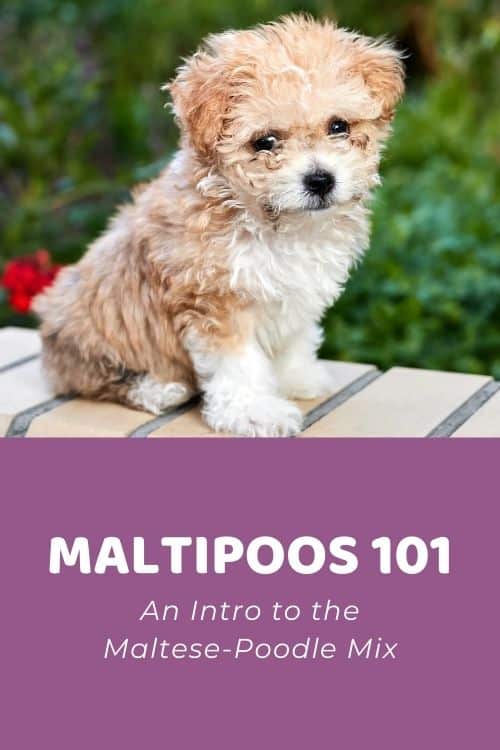
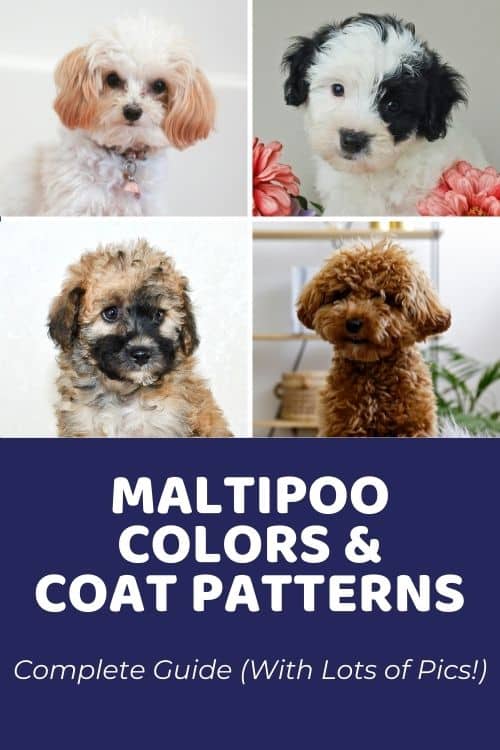
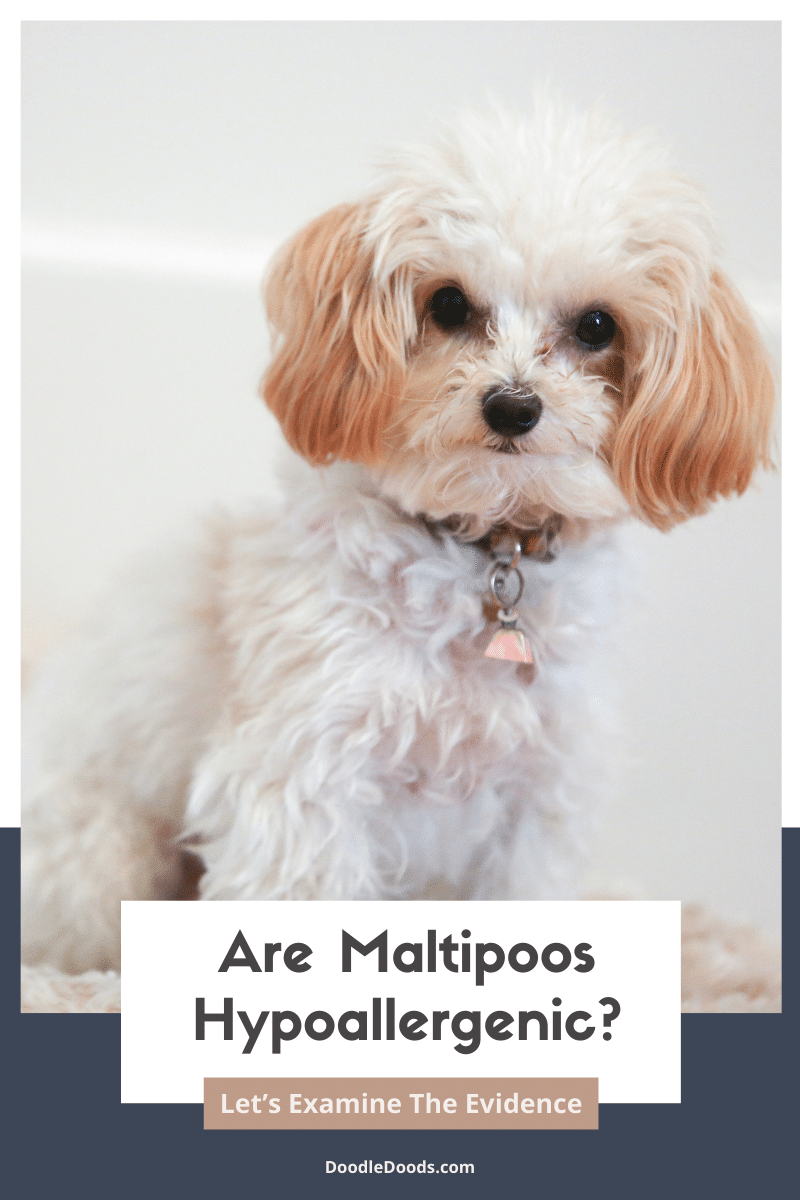
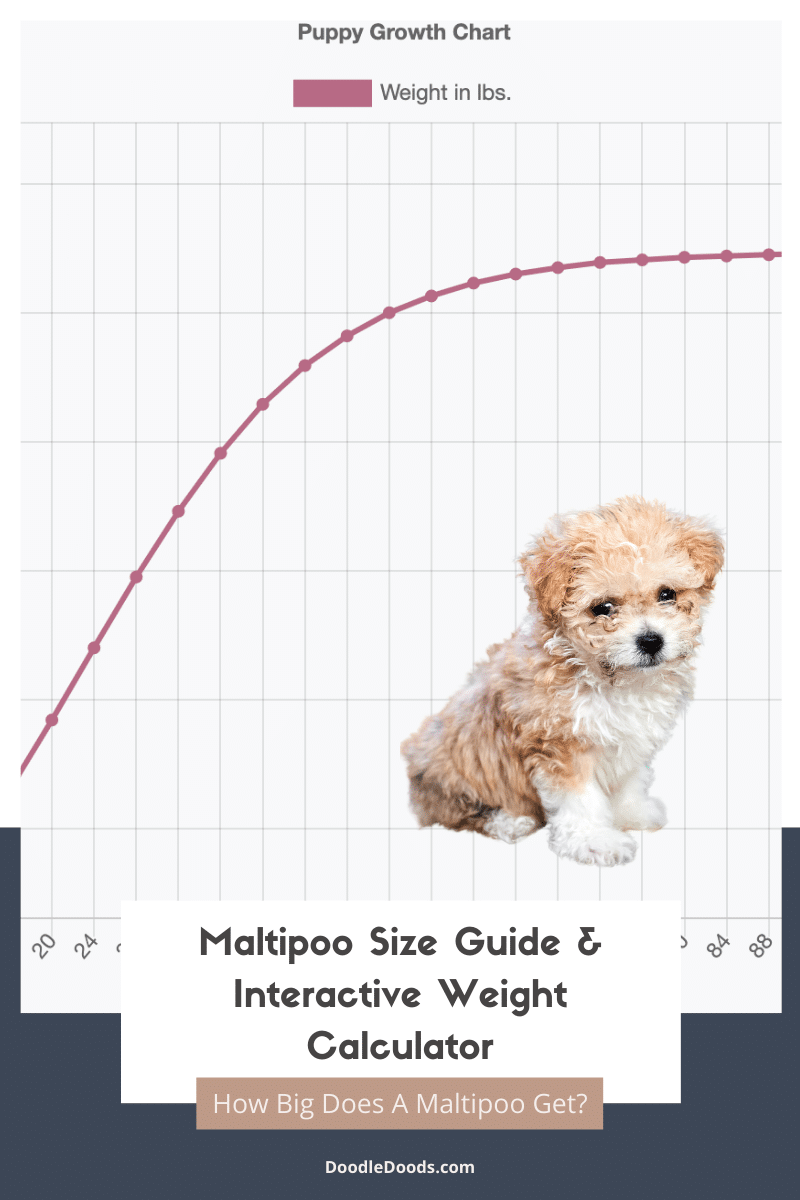
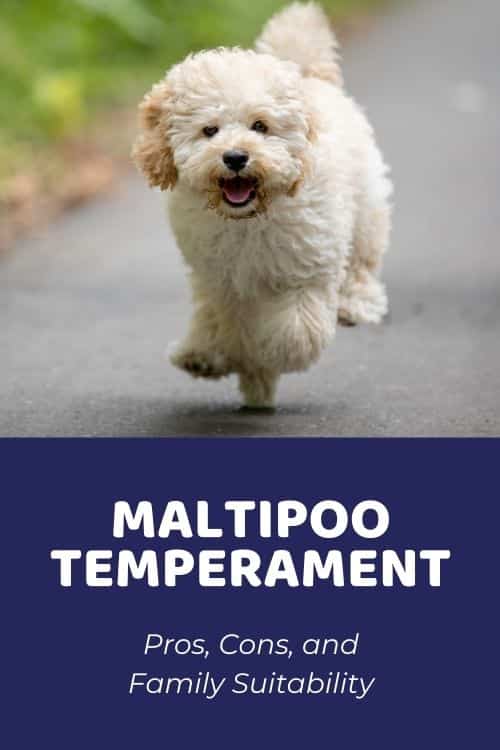
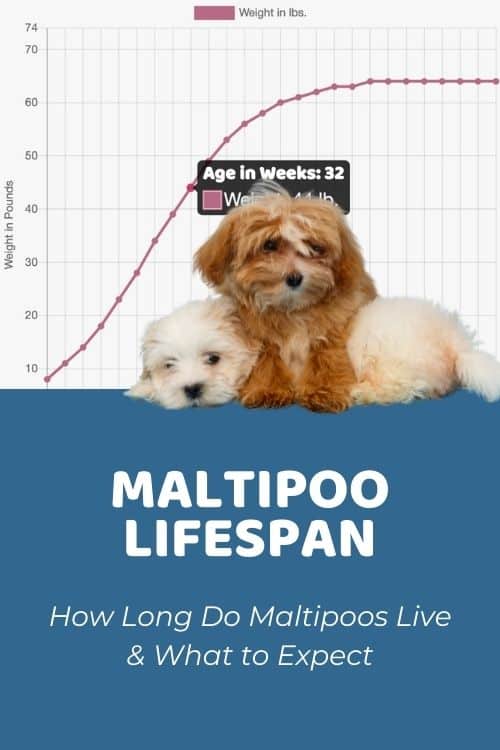
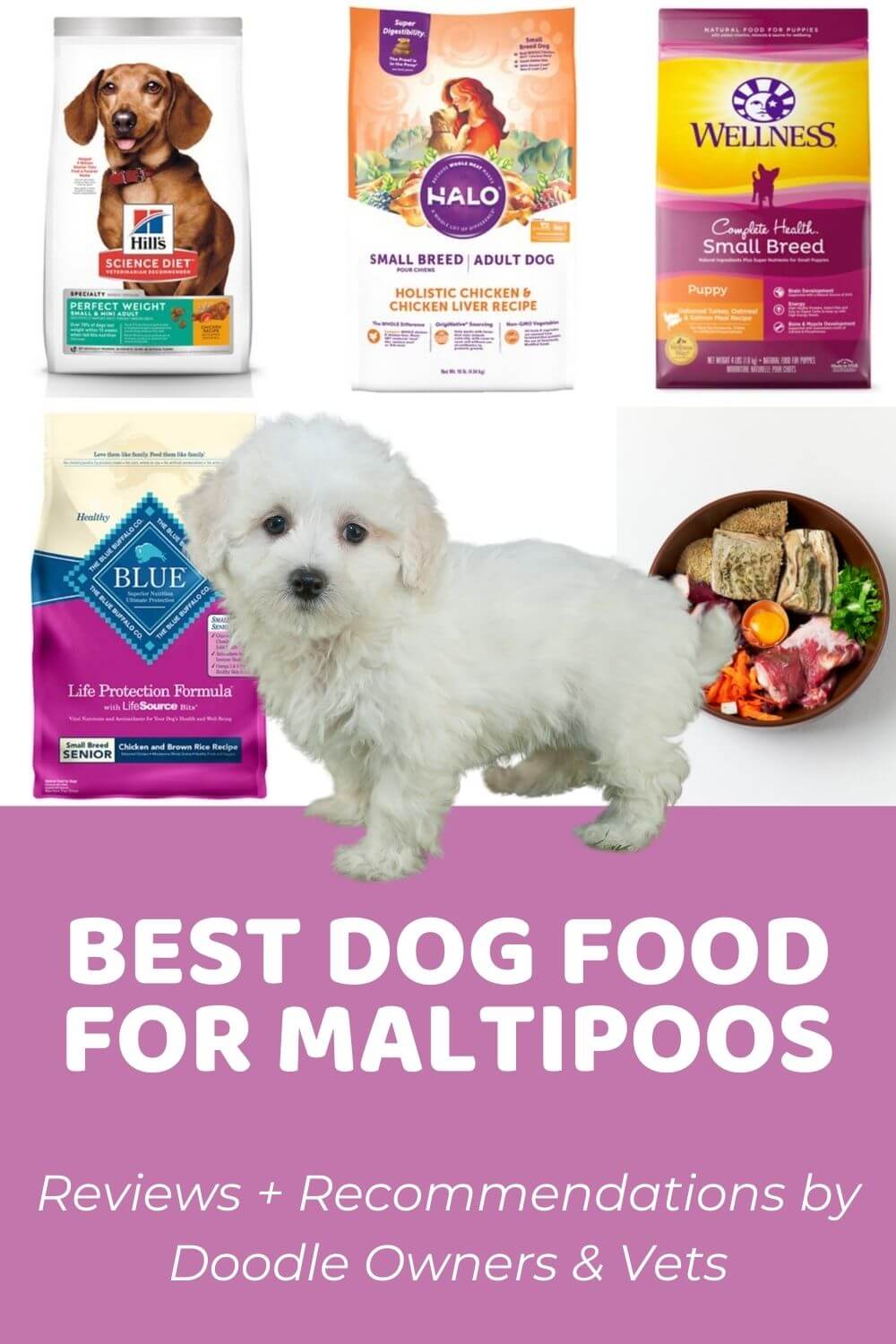
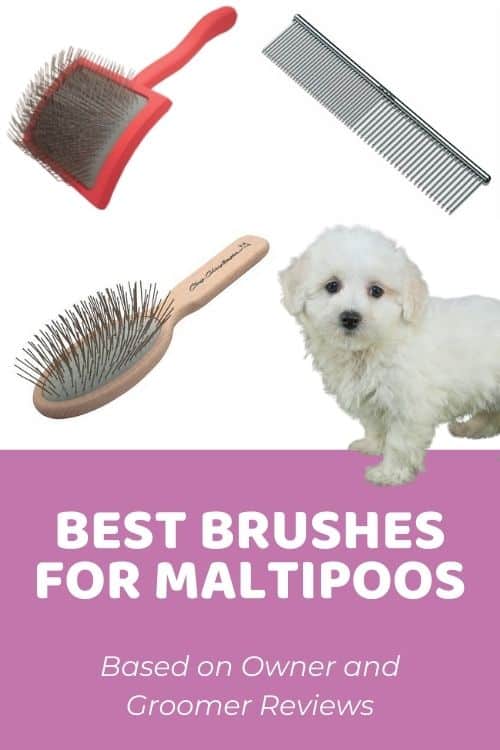

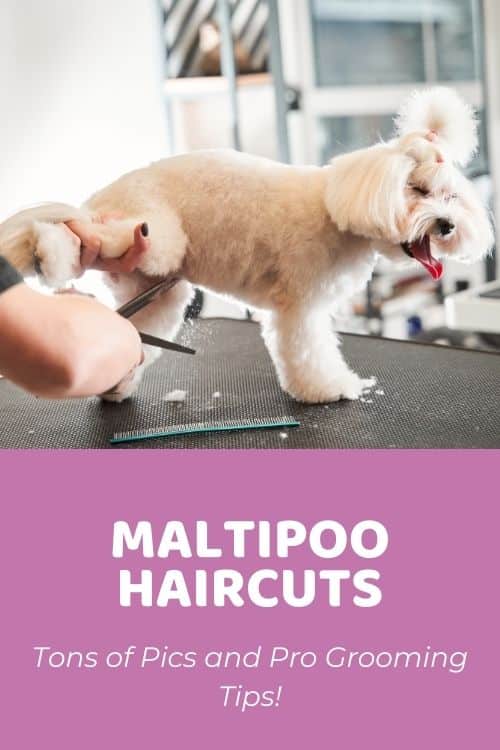
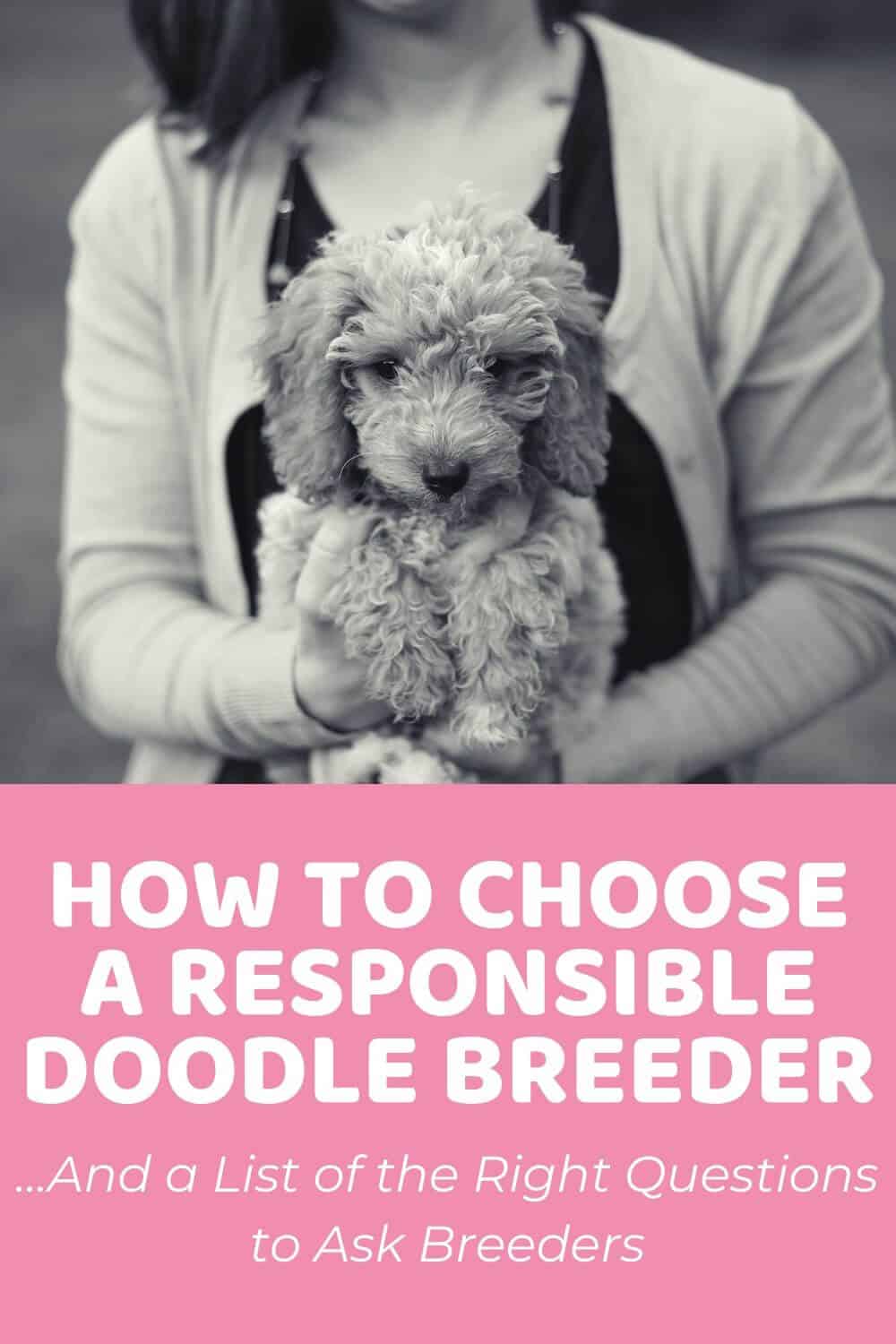

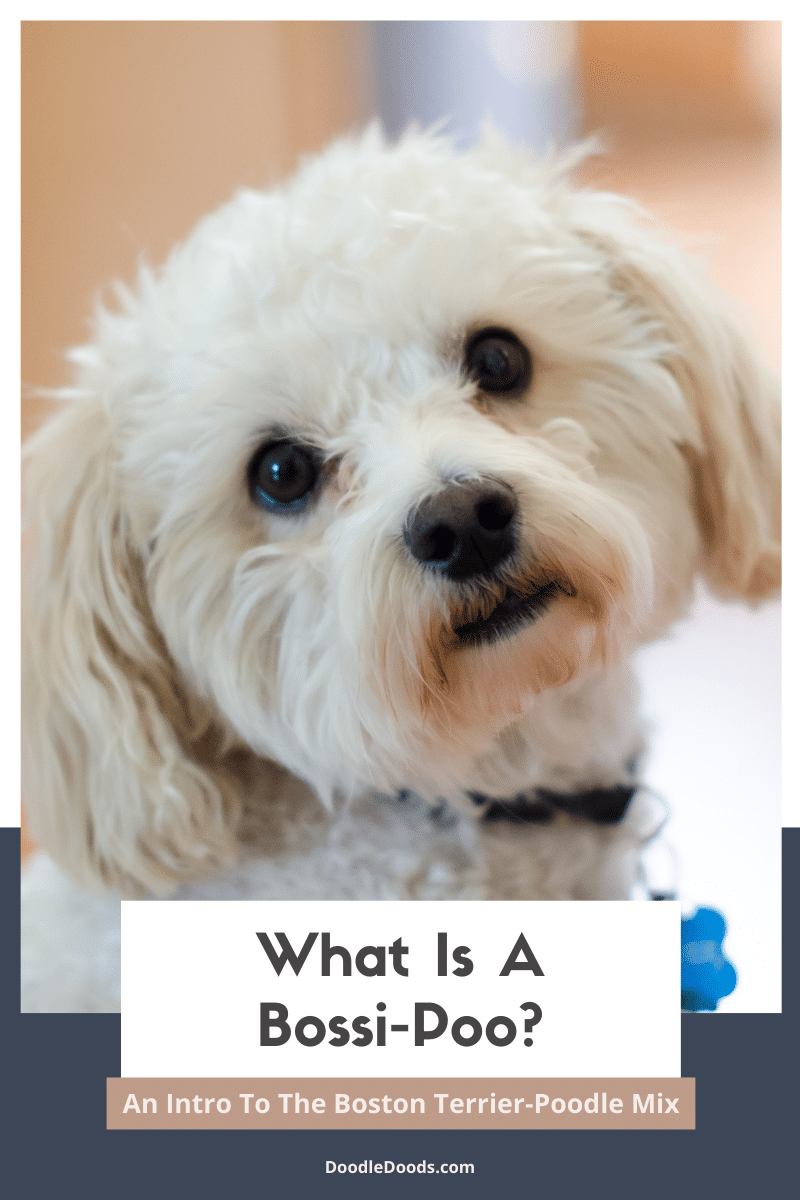
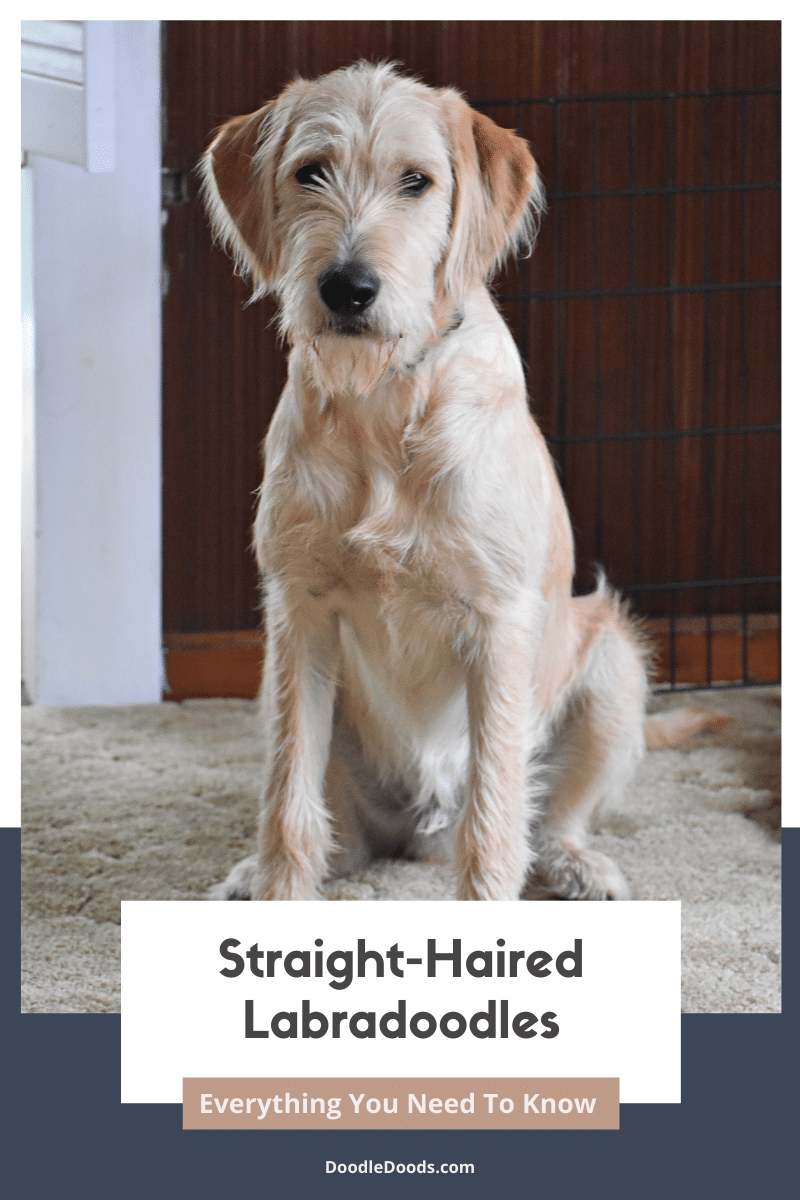
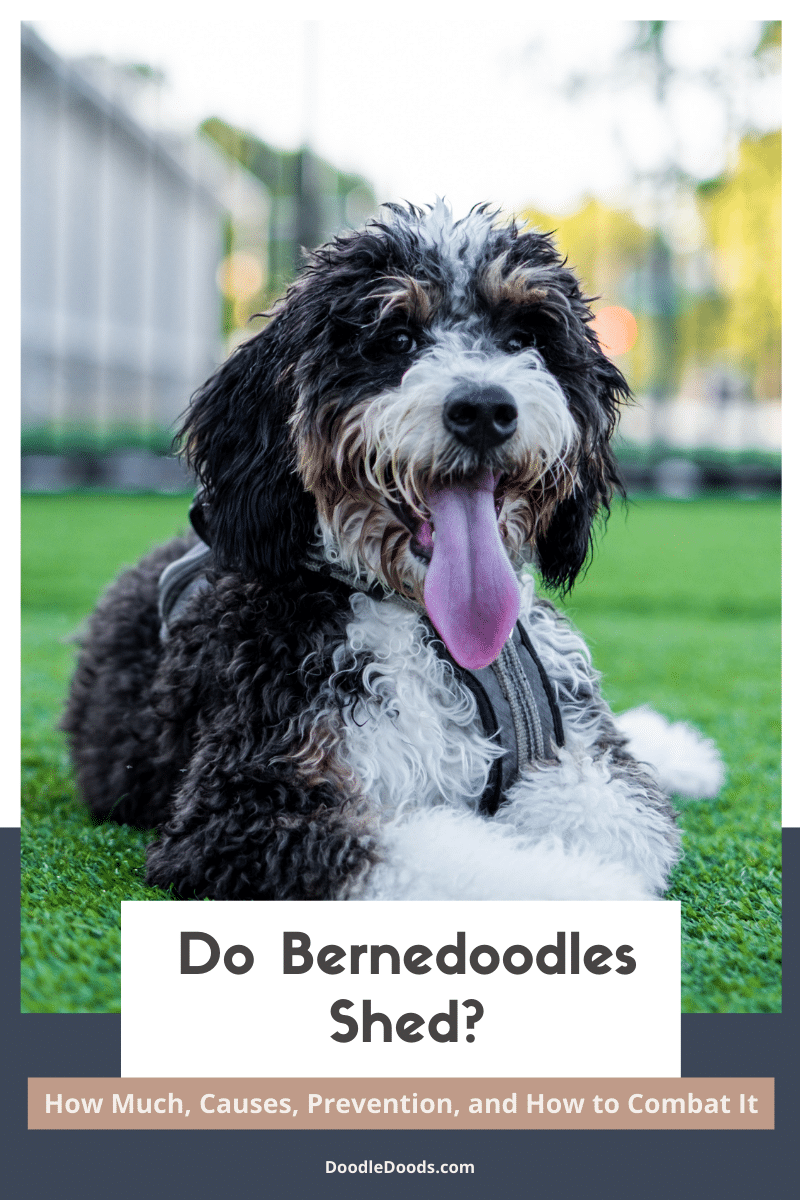


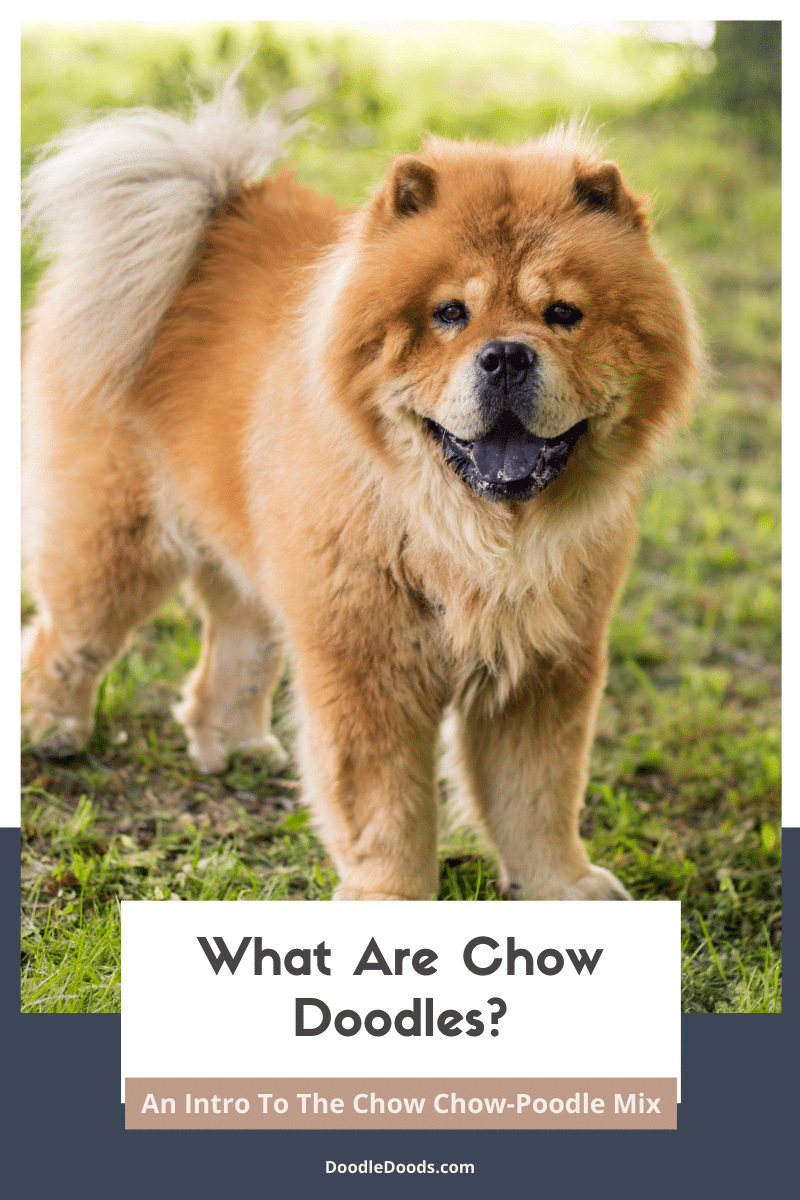
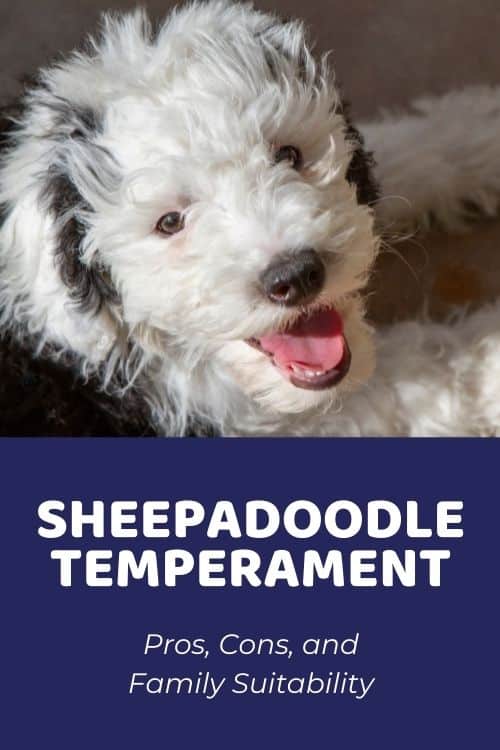
What can I do about my 3 year old male Maltipoo’s grooming. He has to be put to sleep by a vet to get groomed. I have tried many, may groomers but they all give up. He bites and rolls around on the table.
March 26, 2023 at 5:44 pm